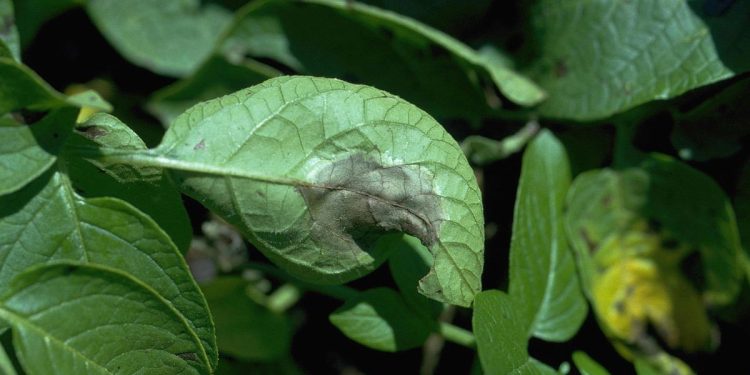Late blight is a serious and highly contagious fungal disease that affects potato plants. It is caused by the pathogen Phytophthora infestans, which can cause significant damage to crops and result in large economic losses for farmers. In this article, we will explore the causes, symptoms, and prevention techniques for late blight in potatoes.
#potatoes #lateblight #diseaseprevention #fungicides #croprotation #sanitation #resistantvarieties
Causes of Late Blight in Potatoes
Late blight is caused by the pathogen Phytophthora infestans, which thrives in cool and moist environments. It can survive in the soil for long periods and is often spread through contaminated seed potatoes or infected plant debris. Late blight is also highly contagious and can spread quickly through a field or to neighboring farms if left untreated.
Symptoms of Late Blight in Potatoes
The first signs of late blight in potatoes are water-soaked lesions on the leaves, stems, and petioles. As the disease progresses, these lesions become dark brown to black and have a fuzzy or moldy appearance. The potato tubers may also develop dark, sunken lesions that are often accompanied by a foul odor. In severe cases, the entire plant may die off, leading to significant yield losses.
Prevention Techniques for Late Blight in Potatoes
Preventing late blight in potatoes involves a combination of cultural practices, fungicides, and resistant potato varieties. Here are some prevention techniques:
- Crop rotation: Avoid planting potatoes in the same field for at least two years to reduce the risk of late blight infection.
- Sanitation: Remove any infected plant debris from the field and destroy it by burning or burying it in a deep hole.
- Fungicides: Apply fungicides as a preventive measure before the onset of late blight symptoms.
- Resistant varieties: Plant potato varieties that are resistant to late blight, such as ‘Kennebec’ or ‘Defender.’
In conclusion, late blight is a serious disease that can cause significant damage to potato crops. Preventing late blight in potatoes involves a combination of cultural practices, fungicides, and resistant potato varieties. By following these prevention techniques, farmers can reduce the risk of late blight infection and protect their crops from significant yield losses.








